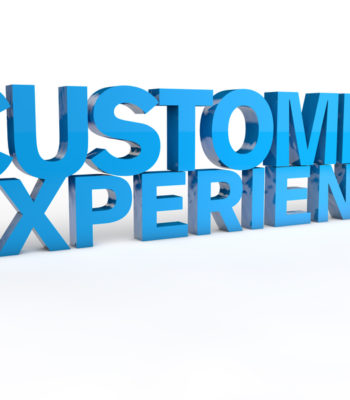
How Customer Experience can Inform Value-Based Pricing
For business-to-business companies that struggle to determine the value their product brings to customers and hence how to price their offering, understanding the customer experience can provide vital guidance. Blue Canyon developed a framework that utilizes understanding the customer experience and its economic impact to successfully value and price products.
Defining the Total Customer Experience
The customer experience consists of three dimensions:
- The supplier experience – The customer’s experience in interacting with the supplier, such as marketing and sales campaigns, the quote and order process, inventory management, customer support, etc.
- The product experience – The customer’s experience interacting with the product, which can include installation, use, maintenance, updates, etc.
- The effect experience – The effects an offering has on the customer’s business, such as changes in outputs, inputs, resources, decision-making, etc.
Defining the customer experience and understanding how the offering impacts the experience informs:
- The value you are delivering to the customer
- The customer’s willingness to pay
- The price you can charge
After mapping out the total customer experience, to truly understand the value of the offering the supplier needs to define the economic impact. The supplier’s offering can improve the customer experience by reducing costs, improving productivity, saving the customer time, etc…Assigning a dollar amount to the value generated by an offering gives the supplier an idea of the value of their product.
Once the value of an offering is defined, the supplier must consider how much of that value can be captured to appropriately price a product.
Pricing the Offering
To determine how much of the value generated can be captured is one of the more challenging activities in value-based pricing. There are a number of different factors that drive the value that can be captured. The supplier must consider its power versus the customer’s power. For example, larger customers will have greater power and be in a better position to capture more of the value generated. The supplier must also think about the contributions of the customer. If the supplier’s offering is going to cause the customer to change its operations or make additional investments, then the supplier must consider that in its pricing. Additionally, the supplier must consider the strength of proof of the value that its offering provides. If the value is very clear to the customer, then the supplier can capture more value in its pricing and vice versa. The final driver that a supplier needs to consider is the competitive dynamics of the market. Suppliers must understand how intense the competitive landscape is and price their offering accordingly.
Blue Canyon has successfully used this Value-Based Pricing Framework in a number of past engagements. In one instance, an appliance manufacturer wanted to develop and price a new solution to penetrate the retrofit market for its product. Through defining the customer experience, Blue Canyon found that the client’s new offering would create an additional $390 in value per product that could be captured through a price premium. Based on analyzing customer power, customer contribution, strength of proof, and the competitive environment, Blue Canyon determined that the client should price the product to capture at least half of the value generated which translated to an additional $195 per product.
In this case, the Value-Based Pricing Framework helped Blue Canyon’s client make both pricing and overall strategy decisions. In addition to learning that its solution should be priced at a premium, utilizing this framework, the client identified the solution requirements to drive increased adoption in the retrofit market and the target cost to drive R&D decisions.
Conclusion
Implementing value-based pricing and moving away from traditional cost-plus or market-based pricing approach is difficult. However, understanding the customer experience can provide vital information on how to value and price an offering. Additionally, it’s important to keep in mind that the customer experience can also provide insights beyond pricing and inform a variety of strategy elements.
To learn more about how the customer experience can inform value-based pricing and view examples of how this framework can be used, download Defining the Customer Experience to Inform Value-Based Pricing.
SPECIAL REPORT: Pricing Trends and Tools: How Companies Set Prices to Optimize Business Outcomes
http://www.slideshare.net/bcpinsights/blue-canyon-and-mapi-strategic-pricing




